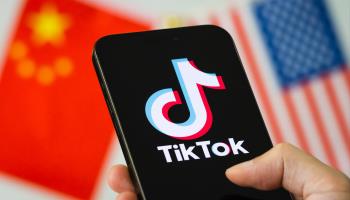After months of delay, Beijing has agreed to approve a US sale of Chinese social media app TikTok
On September 25, US President Donald Trump signed an executive order determining that popular Chinese social media app TikTok’s US divestiture is “qualified” and does not threaten US national security interests. He this month also signed another 120-day extension to delay enforcement of restrictions on TikTok, giving more time for the deal to be finalised. Significant negotiation points between the two sides remain unresolved.
What’s next
Although the deal is expected to face some congressional criticism and may take time to finalise, it is unlikely to be derailed. Both sides will frame it as a victory. Beijing will intensify efforts to capitalise on the goodwill generated by the agreement, using it as leverage in more critical areas of interest such as semiconductors, rare earth minerals and high-technology exports.
Subsidiary Impacts
- China’s relative deprioritisation of the platform industry makes concessions such as the TikTok deal easier.
- Beijing will try to justify its stance of keeping algorithms subject to strict export controls.
- Many young users may leave TikTok US if it starts pushing politically biased content.
Analysis
Concerns about potential Chinese access to US user data through TikTok, as well as potential use of its algorithm to influence public opinion, had culminated in legislation last year that required the app to change ownership away from China-based ByteDance or to shut down (see UNITED STATES: TIkTok’s troubles will persist – January 22, 2025).
Trump has credited TikTok with a significant role in his election victory
Since beginning his second term on January 20, Trump has signed four executive orders delaying enforcement in order to find a US owner for the app. Trump has credited TikTok — with its more than 170 million US users — with a significant role in his election victory. Keeping it open as a communication channel has therefore been one of the key motivators for the president in arranging a deal.
The deal
The reported contours of the agreement suggest an understanding between the Trump administration and favoured investors, including Oracle, Andreessen Horowitz, Michael Dell and the Murdoch family — all of whom would pay a significant fee to the US government for its brokerage services.
Bloomberg reports that ByteDance will get a licensing fee for its recommendation algorithm equal to about 20% of the revenue generated through the algorithm, plus a profit share reflecting its 19.9% equity stake in the new company. Combined, these two components are expected to represent at least 50% of TikTok’s US earnings.
This substantial share for ByteDance could explain why Vice President JD Vance pegged the deal’s value at USD14bn, rather than the USD30-40bn implied by TikTok’s US sales (media companies typically sell for 3-4 times their sales, while Meta is valued at 10 times). However, the deal’s terms are still evolving, leaving open the possibility of Trump’s allies securing a bargain-priced agreement.
It is still up to Congress to declare its position on the sale. Yet while some political pushback is likely, Congress does not have ample tools to obstruct implementation, since it is the president that determines whether any divestiture is ‘qualified’ (see UNITED STATES: TikTok deal will have Congress critics – September 26, 2025).
The agreement’s closure and implementation are both expected within 120 days, although intervening events are always possible.
Win-win solution
These matters notwithstanding, the White House sees the deal as a triumph, allowing Trump to cement his image as a good deal-maker.
Perhaps surprisingly, the official reception in China also seems moderately positive. The People’s Daily carried an official editorial stating that the TikTok consensus was based on “mutual respect, peaceful coexistence and win-win cooperation”, and that the authorities would review the deal in accordance with the law.
There is indeed much in the arrangement for Beijing to like.
The greatest win is regarding prestige. TikTok is the first Chinese-owned app to gain significant market share in Western markets and to dominate its particular niche.
When the idea of a TikTok sale was first raised under the first Trump administration in 2020, China responded forcefully, denouncing the order as a “smash and grab” theft and a bid to undermine China’s economic and technological development while preserving US hegemony. Very quickly, algorithms were added to China’s export control regime, meaning that Beijing could block any move to sell the TikTok algorithm to a foreign buyer (see CHINA: Export Control Law enables trade retaliation – December 23, 2020).
In contrast, Beijing presents the current deal as a commercial transaction serving the needs of both sides, rather than a result of US coercion. The TikTok algorithm will be licensed, not sold, to the new US entity, making export control formalities significantly easier. The deal also recognises ByteDance’s position as an intellectual property innovator.
Beijing presents the current deal as a commercial transaction
Economically, the sale does not significantly impact Beijing, but the continued revenue stream that licensing generates for ByteDance is welcome and preferable to a forced sale. TikTok only accounts for around one-seventh of ByteDance’s total annual revenue (USD146bn in 2024) and TikTok US accounts for less than a half of TikTok’s annual revenue (around USD10bn of USD23bn in 2024). Just under 90% of TikTok’s 1.6 billion users worldwide are outside the United States, and TikTok US is not perceived as being profitable at this point.
In Beijing’s overall macroeconomic approach, which focuses on the manufacturing industry, TikTok and other social media and e-commerce companies are simply not very important. TikTok generates few jobs within China and does not contribute to a durable increase in the Chinese economy’s efficiency, productivity and global effectiveness, in Beijing’s view. In other words, the TikTok deal may have been a Chinese concession to some degree, but it is one that Beijing could afford to make.
It may be instructive to see the TikTok deal in relation to other areas of contention between Beijing and Washington, such as semiconductors (see CHINA: US chip curbs slow but do not stop AI progress – May 9, 2025). For China, the deal removes a significant point of contention from negotiations, allowing it to focus more on areas central to its strategic interests such as maintaining access to global markets, resources, technologies and capital for key emerging industries as outlined in its techno-industrial policies.
The deal also means Beijing can present itself as an upstanding interlocutor, honouring commitments made in successive rounds of talks — including agreements on the purchase of Boeing aircraft to slightly offset its trade surplus. Beijing might even hope that the deal creates leverage over Washington, which it could use in future areas of negotiations.




